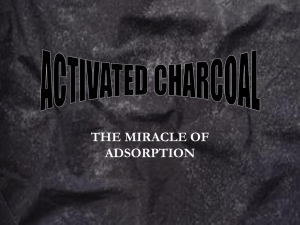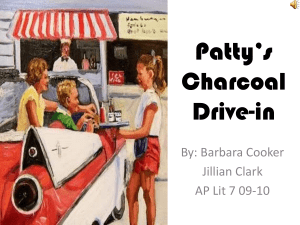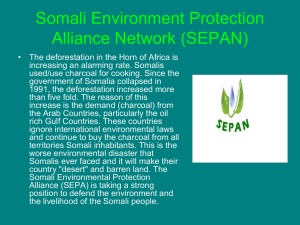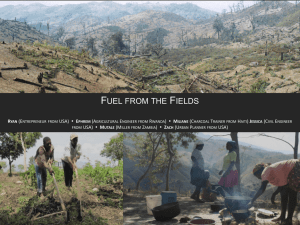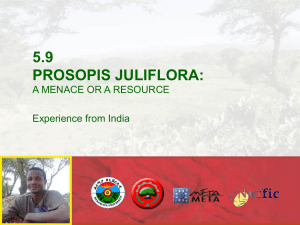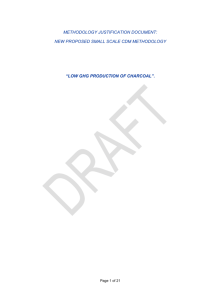scaife
advertisement
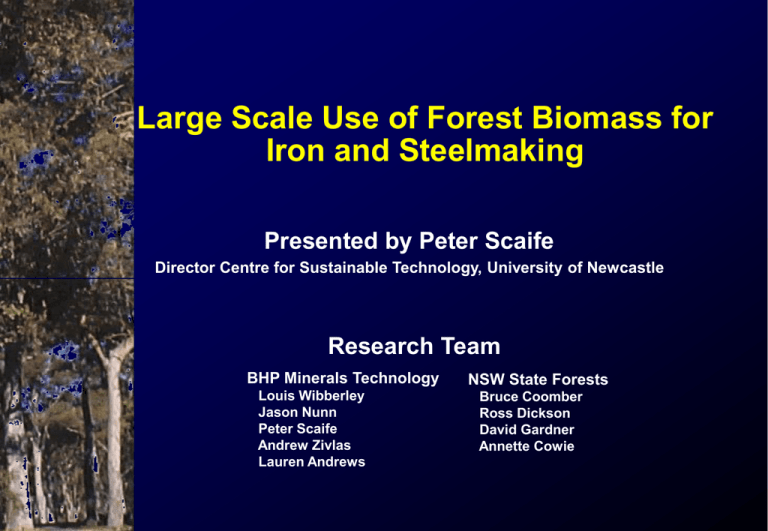
Large Scale Use of Forest Biomass for Iron and Steelmaking Presented by Peter Scaife Director Centre for Sustainable Technology, University of Newcastle Research Team BHP Minerals Technology Louis Wibberley Jason Nunn Peter Scaife Andrew Zivlas Lauren Andrews NSW State Forests Bruce Coomber Ross Dickson David Gardner Annette Cowie Introduction • Steel industry is based on fossil fuels (coal and gas), and is a significant source of Greenhouse gas emissions (GGEs): – with both incremental and emerging technologies, coal and gas-based processes have similar GGEs • Plantations 2020 could generate a wood flow of 20-40 Mm3 annually by 2020: – needs large scale use to allow ongoing sequestration • Opportunities to reduce GGEs in the steel industry using renewable energy (especially biomass): – use charcoal to supplement coal • Project established to evaluate “large scale use of forest biomass for steelmaking in Australia”: – funded by SERDF, BHP and NSW State Forests Historical Perspective Impressive process improvements have been made by the steel industry over time, by both breakthrough and incremental technology development Low bloomery (charcoal) CO2 t/t steel bar 1000 Liquid iron (charcoal BF) 100 10 1 Wet puddling Coke BF Hot blast BF Bessemer steelmaking Open hearth BOS Continuous casting Recycling Integration New technology 1500 2000 Renewables ? 0 0 500 1000 Year Sustainable Steelmaking Reduction in Greenhouse Gas Equiv. % Reducing the environmental footprint 7 100 80 60 40 20 Opportunities for Charcoal • 7 Mt iron produced from charcoal in 1990 in Brazil • Part replacement of fossil fuel carbon: – a slag foamer and recarburiser in electric arc furnace steelmaking (10,000 tpa) – an additive to the coal blend for cokemaking (30,000 tpa) – an injectant to ironmaking blast furnaces (500,000 tpa) • complete replacement of coal in ironmaking (3,500,000 tpa) Objectives • Evaluate the suitability of a range of tree species (from both plantations and native forests) for charcoal production • Conduct fundamental laboratory and plant scale studies into the performance of charcoal in steel production • Assess the impact of large scale use of charcoal in steel production using life cycle analysis • Determine synergies with other forest products including residuals/wastes, which will further improve the environmental impacts, social and economic benefits Wood Properties Species Plantation E. maculata E. grandis E. nitens Sapwood (%) Moisture (%) Density (kg/m3) Ash (% db) 83 66 51 43 46 56 603 499 457 0.68 0.48 0.53 Carabost Gunnedah 42 35 35 36 734 718 0.25 0.37 E. macrorhynca 35 46 572 0.09 Native forest E. sideroxylon Charcoal Yields and Ash Contents Species Plantation E. maculata E. grandis E. nitens Charcoal properties Yield Ash content (%) (%) 25.4 25.5 23.4 2.59 1.87 2.19 29.3 29.5 27.1 0.86 1.19 0.37 Native forest E. sideroxylon Carabost SF Gunnedah E. macrorhynca Charcoal Production 5000 kg produced by Corrimal Cokeworks from wood flitches and logwood Trials at One Steel’s Sydney Steelmill • Charcoal was shown to be equivalent to coke for slag foaming in the electric arc furnace – a medium value use ($200-250/t) • As a recarburiser, charcoal achieved a similar carbon recovery to high grade SASOL carbon: – this is the highest value use ($550-600/t) Use in Cokemaking • Charcoal does not become fluid during the coking process, but acts as an inert component in the coal blend – loss of strength (-ve) – increase in size (+ve) • Pilot studies carried out in test coke oven (0.4t capacity) at BHP Minerals Technology – 5 and 10% addition levels • Results showed: – an unacceptable loss in strength, even for a 5% addition – a large increase in mean size • Further work required at lower levels of addition (around 1%) – to determine whether size benefit can be obtained without a significant impact on strength – equivalent to 30,000 tpa at Port Kembla Steelworks Large Scale Use of Biomass as a BF Injectant A LCA was carried out to determine the GGE benefit from the use of charcoal as a BF injectant at Port Kembla. All values are in t CO2-e/t steel. BF - BOS route Parameter Conventional 20% charcoal Gross GGE 2.74 2.98 Charcoal production -0.88 (renewable) Displacement credit for -0.41 -0.33 by-products Net GGE 2.33 1.77 This is equivalent to a saving of 2.5 mt of CO2-e at Port Kembla. Economics North Coast mill residues thinnings Inland hardwood plantations Softwood thinnings Wood cost ($/green tonne) $30.00 $45.00 $50.00 $45.00 Wood:charcoal ratio 7:1 7:1 7:1 7.5:1 Production costs ($/tonne charcoal) Wood cost $210 $315 $350 $337 Charcoal production $130 $130 $130 $130 $15 $15 $20 $7 $355 $460 $500 $474 Transport Total Conclusions • Charcoal yield is directly related to wood density • Economically feasible to replace imported carbon for recarburisation: – requires 70,000 m3 per annum of green wood • Opportunity for a broad-based commercial charcoal industry in Australia to supply niche markets: – steelmaking recarburiser – metallurgical reductant for high value applications – activated carbon • Larger scale use in the steel industry will require: – a least a two-fold reduction in the cost of delivered green wood – further development of carbonisation technology (larger scale) – carbon taxes and/or credits for other environmental and social benefits (eg salinity amelioration, watershed protection, employment in regional areas) • www.sustainabletechnology.com.au (SERDF) Future Large scale use of forest biomass requires a substantial reduction in costs: • Planted forest management specifically for charcoal production: – integrating with other uses eg activated carbon, bioenergy • Practices and technologies for large scale harvesting and forwarding of biomass. • Engineering design studies into efficient large scale facilities for carbonisation. • A more detailed assessment of the market potential (domestic and export) for charcoal in existing and new steelmaking technologies. • Closer scrutiny of the operational logistics for transport throughout the value chain.

